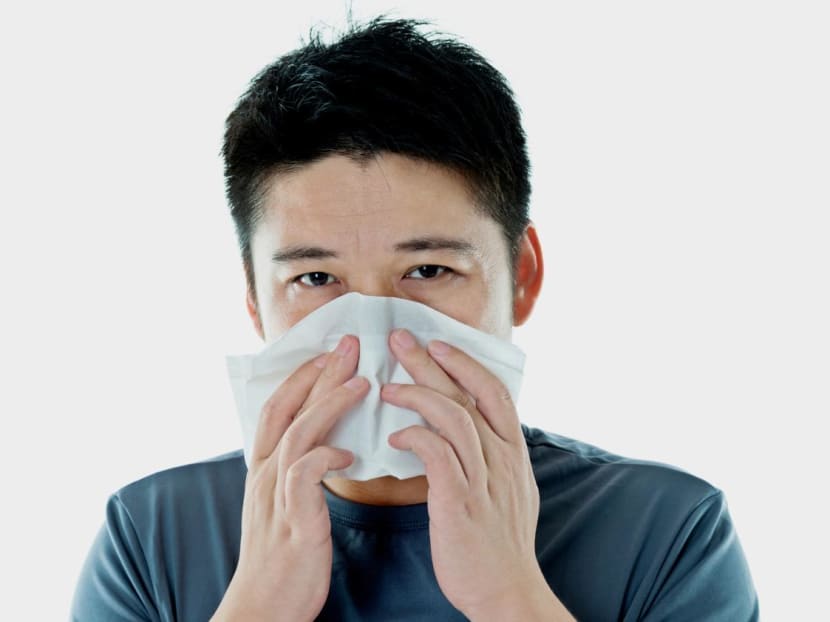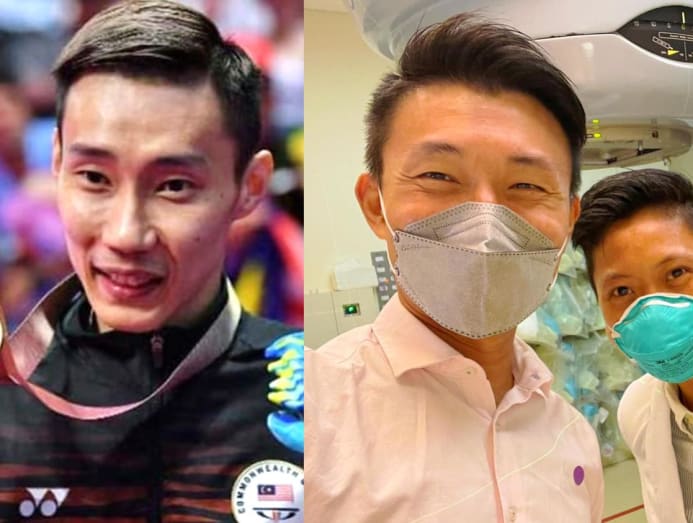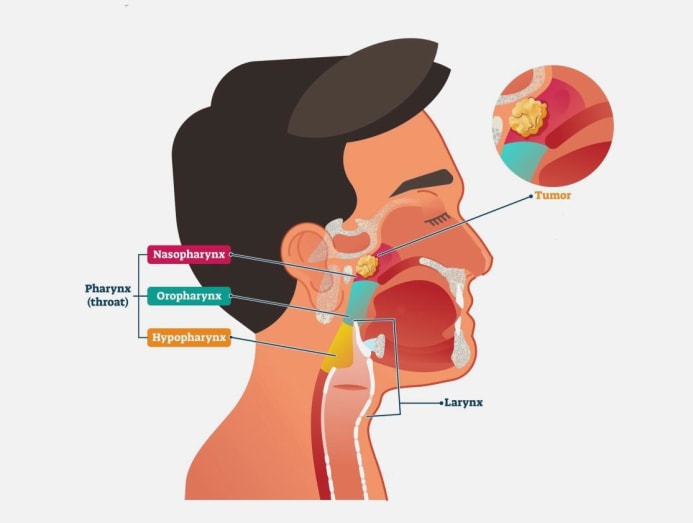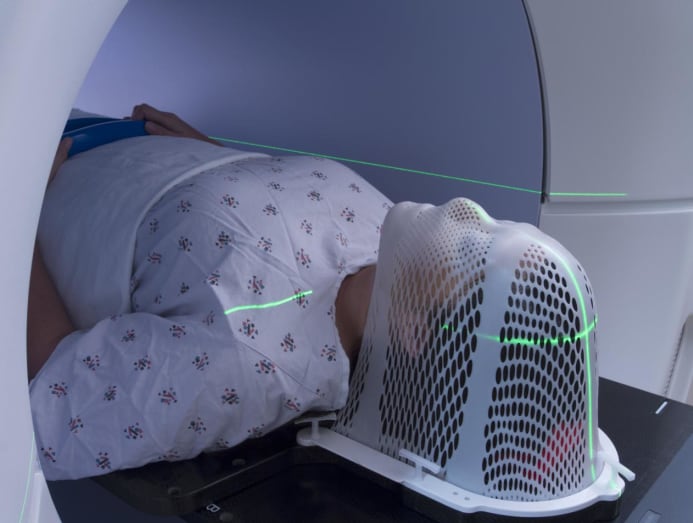Have a persistently blocked nose or trouble hearing? These could be signs of nose cancer
MP Baey Yam Keng and Olympic medallist Lee Chong Wei have both been in the news for their fight against nose cancer. Find out more about the condition and the factors that make you susceptible. Males, for instance, are two to three times more likely to develop it than females.

(Photo: iStock/baona)
If you have been following the news, you’d have read about Senior Parliamentary Secretary for Transport Baey Yam Keng’s nose cancer diagnosis in early January. Back in 2018, Malaysian badminton player Lee Chong Wei also had to deal with early-stage nose cancer.
What exactly is it and what are the symptoms? Nose cancer – or nasopharyngeal cancer (NPC) – affects the nasopharynx, which is the upper part of the pharynx (throat) behind the nose.
“The cancer typically arises from a groove known as the fossa of Rosenmuller, situated at the side of the nasopharynx,” said Dr Lim Keng Hua, an otorhinolaryngologist and ENT specialist at Ear Nose Throat, Head & Neck Surgery at Mount Elizabeth Medical Centre.
While Baey and Lee did not reveal what symptoms they experienced, NPC could start off as a persistently blocked nose. Blowing into a tissue doesn’t help to unblock it and if the patient has been living with it for a few months (and gotten used to breathing through the mouth), he’d have dismissed it as just a “sinus” problem.

But there may be more accompanying signs. The patient might also detect a painless lump on the side of the neck as well as other symptoms such as a blocked ear, blood-stained saliva or phlegm, nose bleeds, frequent headaches or earaches, change in hearing (such as a sudden loss of hearing or ringing in the ear), and/or even double vision.
YOUR GENES AND GENDER MATTER
Baey, a Member of Parliament, is 52 years old, while the three-time Olympic silver medallist was 36 when he was diagnosed. Although we aren’t privy to the details of their lifestyle, both men appear to be healthy and in good shape. So, why did they get it? And are men more prone to NPC?
Certain genetic risk factors are strongly associated with nose cancer, said Associate Professor Melvin Chua Lee Kiang, who is the head and senior consultant at the National Cancer Centre Singapore’s (NCCS) Department of Head & Neck and Thoracic, Division of Radiation Oncology. However, these mutations do not explain why men are more at risk, he added.
Women may be protected from NPC due to their higher oestrogen levels, said Dr Lim, echoing a hypothesis held by some experts. “Others suggest that it could be due to smoking since the habit is more prevalent among men. However, there is no conclusive evidence.”
In general, males are two to three times more likely to develop NPC than females, according to Assoc Prof Chua.
Other than having a family history of NPC, another genetic factor is ancestry. “The majority of NPC patients have ancestries that are traced to the Southern Chinese provinces,” said Assoc Prof Chua. “More than 70 per cent of cases occur in East and Southeast Asia. Hence, for Singaporeans, dialect groups that emigrated from the Cantonese, Teochew, Hokkien and Hainanese regions have a higher incidence of NPC.”
NOT JUST OLD UNCLES
Baey and Lee aren’t unusual in their age profiles either. Citing the latest Singapore Cancer Registry Annual Report 2018, Assoc Prof Chua highlighted that most of the cases diagnosed between 2014 and 2018 were Chinese males in their 30s to 50s.
“NPC ranks as the third-most common cancer among the 30-to-39-year-old age group, and the second-most common cancer among the 40-to-49-year-old age group. This observation has remained constant over the years,” said Assoc Prof Chua.
According to the five-year report, about 240 patients were diagnosed with NPC in Singapore each year. As comparison, the top cancer among men during the same period was colorectal cancer. It recorded an incidence rate of 6,129, which averages out to about 1,532 cases per year.

NPC's annual average number of cases may still seem significant but it is actually a downtrend from previous data, said Dr Donovan Eu, a consultant with National University Cancer Institute, Singapore’s Division of Surgical Oncology (Head and Neck Surgery). “In this most updated report, the incidence of NPC has actually been excluded from the top 10 cancers in men,” he said.
Commented Assoc Prof Chua on the same report: “Such an epidemiological trend is interesting as it would suggest that different risk factors are at play in causing NPC in the young versus that in the elderly. The causes underlying the overall declining trend in NPC is unknown, but it could be healthier eating habits, decline in smoking numbers and economic development”.
CUT DOWN THE SALT
Back to the abovementioned Chinese dialect groups that are more prone to NPC. These communities are also more likely to include salted fish and vegetables in their diet – which could explain their high risk of developing the cancer.
Said Dr Lim, citing a 2017 study in the Chinese Journal Of Cancer: “Those who consumed salted meat or vegetables at least once a week was found to have a four-time increased risk of developing NPC compared to those who never or rarely consumed salted food”.
“Salted and preserved foods are high in nitrosamines, which are carcinogenic compounds linked to NPC,” explained Assoc Prof Chua. This link between a high intake of salted food and NPC is also observed anecdotally, he added.
Historically, mothers would flavour porridge with salted fish before feeding it to their babies and children. Since this is now an uncommon practice, he said that it might, in some ways, account for the declining NPC rates.

VIRAL CONNECTIONS
Being exposed to the Epstein-Barr virus (EBV) is a factor. In fact, Dr Lim noted that “two new variants of EBV were discovered by Singaporean scientists to have a high risk of developing NPC. Individuals infected by this unique EBV strain have 11 times higher risk for developing NPC than non-carriers”.
“An EBV infection is probably the strongest risk factor associated with NPC that occurs in this part of the world,” concurred Assoc Prof Chua, who added that the human papilloma virus (the virus responsible for cervical cancer) is also linked to a less common subtype of NPC.
WHAT ABOUT SMOKING?
The most immediate connect that most people would draw is smoking and NPC. But is tobacco use a factor in the first place? Dr Lim said that it has been proposed that tobacco may contain substances that further activate the action of EBV if you become infected.
“Tobacco smoking is significantly associated with the risk of NPC. Compared to never smokers, current smokers had four times the risk of developing NPC, and those who had ever smoked had double the risk,” he said.
Dr Eu begged to differ. There are many types of NPC, he said. “Smoking, in general, is not a well-established risk factor for the cancer subtypes seen in our population. But it has been shown to be a risk factor for other subtypes of NPC.”

DIAGNOSIS
NPC has an insidious way of creeping up on its victims. In its early stage, it is almost undiscernible. Most patients are diagnosed at a later stage and the vast majority of them present with neck lumps, according to Dr Eu.
“Early-stage NPC tends to be relatively asymptomatic and is often discovered by chance,” added Assoc Prof Chua. In fact, around 70 per cent of NCCS’s patients present with advanced stages 3 to 4 NPC. The symptoms range from the abovementioned signs and may also include facial numbness and jaw tightness when the cancer has invaded the skull bones and further into the brain, he said.
The diagnosis is usually made after a nose scope known as a nasoendoscope, explained Dr Lim. It allows the doctor to search for tumour growths in the nasopharynx. If detected, a biopsy is done to confirm the diagnosis.
TREATMENT
Fortunately, most NPC cases in Singapore are “radiosensitive”, meaning they respond well to radiotherapy treatment, said Dr Lim.
Dr Eu agreed that radiotherapy methods such as Intensity Modulated Radiation Therapy (IMRT) and Intensity Modulated Proton Therapy (IMPT) in the last 10 years have undergone vast progress to deliver greater precision in the treatment of NPC.

At the NCCS, for instance, pioneering technology has been developed to focus more on minimising the side effects of radiotherapy such as persistent dry mouth, chronic fatigue, chronic dental infections, and the loss of taste and smell (which can start to improve three weeks to two months after radiotherapy ends, according to cancer.net). This is done by delivering the high radiation dose to the tumour while minimising dosing the surrounding organs such as the salivary glands and swallowing muscles, explained Assoc Prof Chua.
The intensity of the treatment can even be customised using (surprise, surprise) the EBV load detected in the patient’s blood. “This test can be used at different points of treatment: At diagnosis, during treatment, and end of treatment to adapt the treatment accordingly,” said Assoc Prof Chua.
For later-stage NPC, chemotherapy may be added, said Dr Lim, while surgery may be included to treat recurring cases. “The use of minimally invasive surgical approaches such as endoscopic and robotic treatment has further improved patient outcomes,” said Dr Eu.
Also assuring are the statistics on recurring NPC. “Early-stage nose cancer has a very low recurrence rate. This is, however, not so much the case for patients with advanced NPC, who have a reported relapse rate of between 10 per cent to 20 per cent,” said Dr Eu.
As for prevention measures, try these, said Dr Lim: Don't smoke, minimise your intake of salted food and get screened regularly if you have a family history of NPC.







